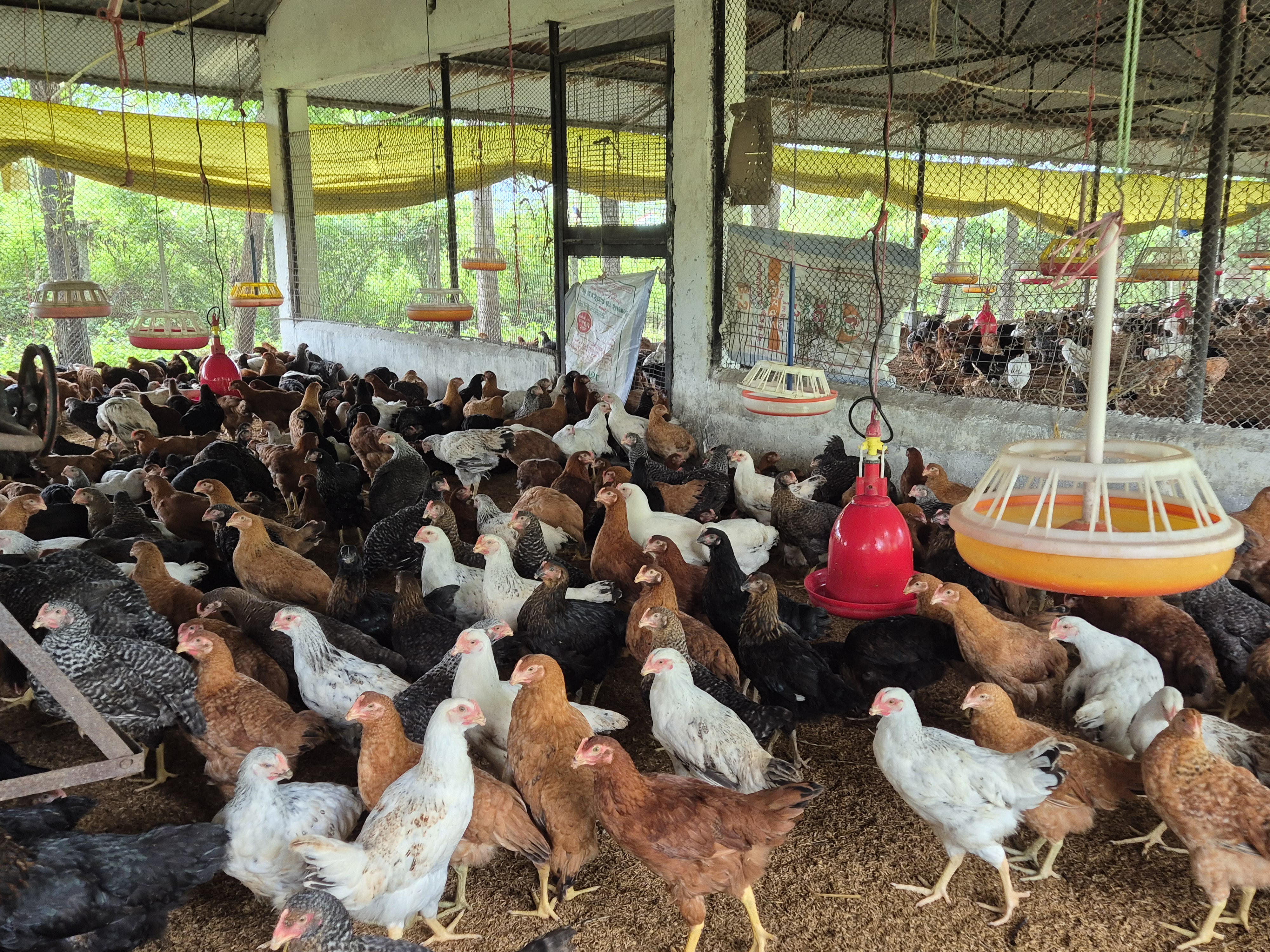Feed

Feed
For every chick, the quality and quantity of feed change according to the season and the chick's body weight. Use 5 kg finely ground maize for the first 4-5 hours, and after that, give chick starter feed. Feeding should be four to five times a day, and every time mix the remaining feed in the feeder along with fresh feed.
| Age in Days | Feed Consumption per 1000 Chicks (gm/chick/day) | Total Feed Required (Kg) | Progressive Feed Required (Kg) |
|---|---|---|---|
| 7 | 15 | 105 | 105 |
| 14 | 25 | 175 | 280 |
| 21 | 35 | 245 | 525 |
2.4.1 Managing Feed
The expenditure on feed can be reduced by minimizing feed wastage and by proper feed management, including rodent control.
2.4.2 Providing Feeders
The feeding management process starts with providing a sufficient number of feeders of proper size. The feeders should be uniformly distributed in alternate rows parallel to the waterers so that a bird need not walk more than two meters to reach the nearest feeder. Moreover, the height of the feeders should be adjusted so that the brim of the feeder is at par with the back of the birds. Proper height of the feeders will encourage comfortable feeding without any spillage and wastage of feed. If the height is too low, there will be excess feed wastage. On the other hand, if the feeders are kept too high, the birds may not be able to take the feed properly, leading to poor growth rate. This results in weak birds and lack of uniformity in the flock. Manually filled feeders should not be filled to full capacity because it leads to feed wastage. Therefore, the manual feeders must be filled at least three times a day to only two-thirds of their capacity. This will not only prevent feed wastage but also ensure that birds take several fresh meals a day, leading to better growth and development. Mix the old leftover feed thoroughly with the new feed in the feeders to ensure its full utilization.


